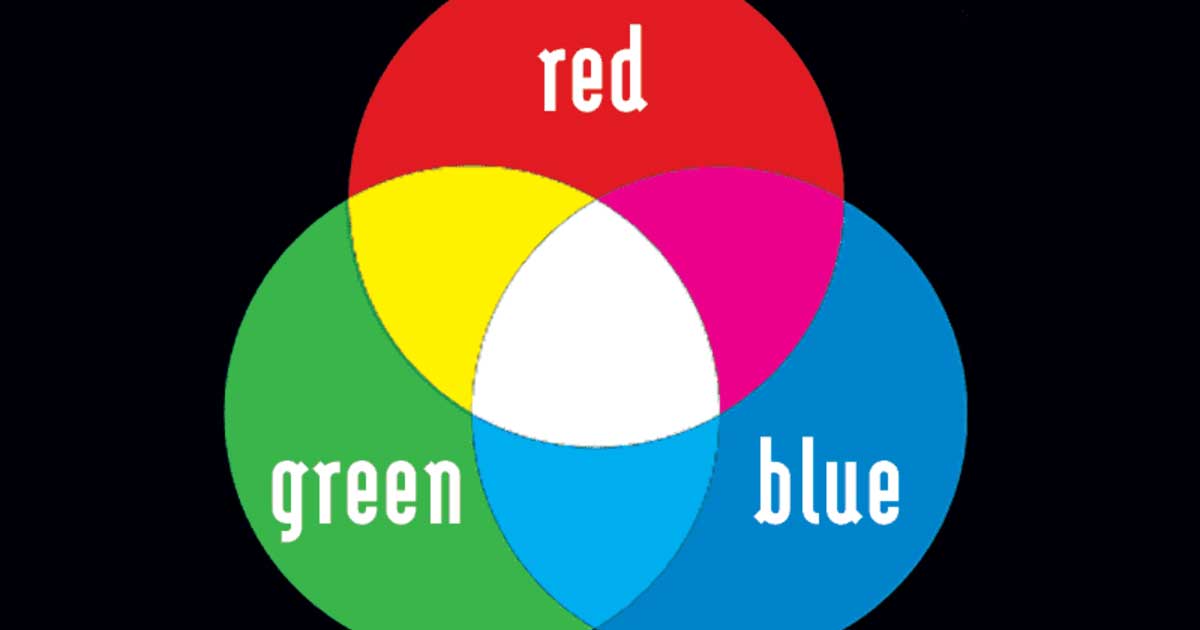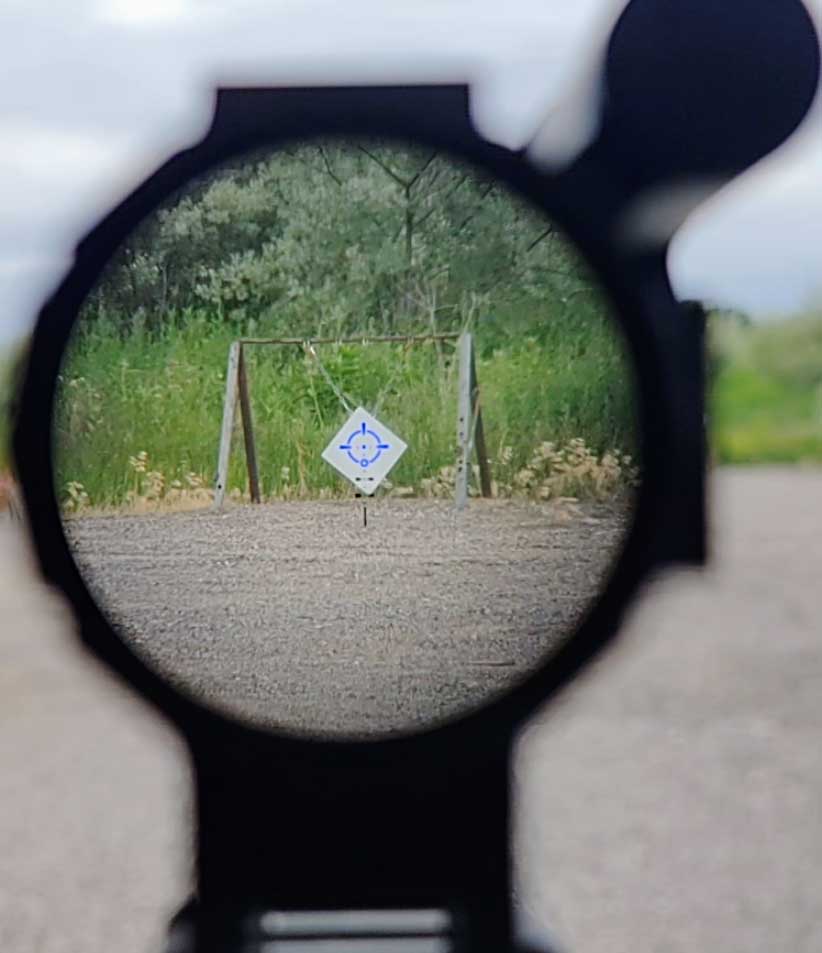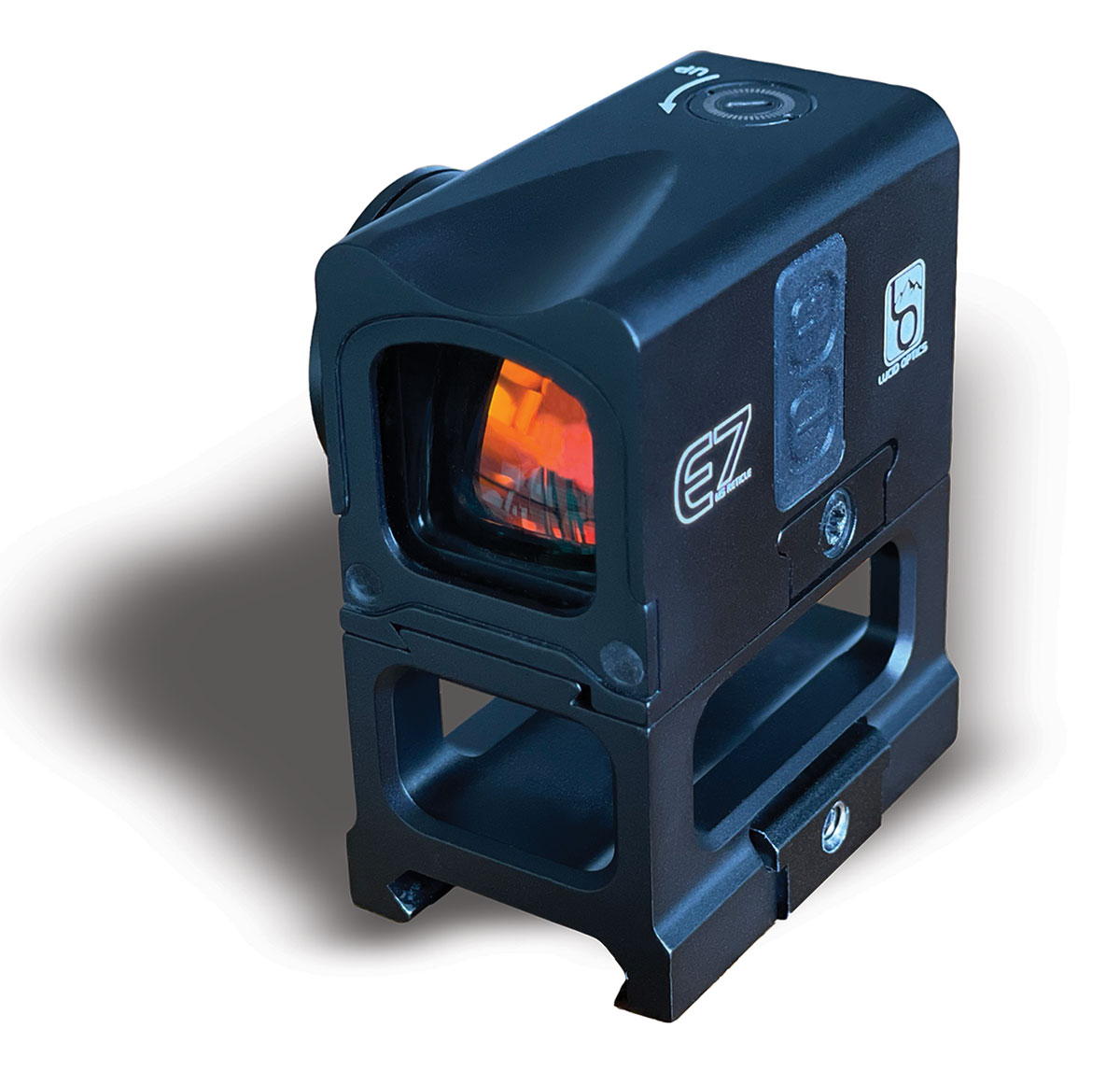Stock Image
Reticles have come a long way from the simple duplex crosshair in our grandfather’s hunting rifle. Today we have a dizzying array of different reticle designs that we can use on both rifles and handguns. Even more recently, we have had a selection of different colors of reticle illumination. The color of our reticle does matter. As we learn more about how the human eye perceives color, we gain a better understanding of how different color wavelengths interact with our eyes and visual cortex.
Reticles have always been something that we want to be eye catching and pay attention to. In the beginning, red was the color used for illumination. It was also easy given the technology and optic coatings of the time.
As technology progressed, we saw several reflex optics and etched reticles illuminated in green. It was an easy progression, since green is such a similar wavelength to red (about 2% difference in both amplitude and frequency) that the same coatings and emitters could be used.
HOW HUMANS SEE COLOR
Before we get into the gear, it’s important to understand how we see color. The American Academy of Ophthalmology says, “The visible spectrum for humans falls between ultraviolet light and red light. Scientists estimate that humans can distinguish up to 10 million colors.”
The London Vision Clinic tells us, “The human eye has three types of cones that allow us to see a certain range of light and, therefore, colour, on the electromagnetic spectrum – i.e., the visible light spectrum. These colours are blue, green and red. But obviously, we see much more than just three colours. That’s because there is an overlap in the wavelengths of light covered by the cone cells. For example, white is not a wavelength of light; instead, we perceive it as a mix of different colors.”
This is something you can try at home. Take three flashlights with different colored lenses and shine them on the wall on top of each other. What you will get is what appears to be white light. That is because while black is the absence of color, white is a mix of it.

“The Color of Light.” Photo: American Museum of Natural History
THE HOW AND WHY OF OUR ILLUMINATED RETICLES
While red and green both work well for reticles and are definitely eye catching, there are some tradeoffs to these two colors: First, nearly 8% of the human population is color blind to the red wavelength. This means that, if they are using a reflex-type sight in red, they can’t see the dot!
Red is also an alert color to humans — it creates stress and invokes a strong emotional reaction. This is because we perceive red as danger (think: blood). Due to the stress-inducing nature of red to the human eye, we never see a crisp, clear reticle or dot. Red flares and never appears clean to the human eye. This effect is even more pronounced to people with astigmatism.
Furthermore, red is a stop color, meaning we cannot see through it. There may be situations involving either small targets or very long-range targets where the red dot or reticle actually obscures our view of the target. This phenomenon is largely mitigated by precise sizing of the dot or reticle — 3-5 MOA dot sizing and reticles usually being 1/10 mil in line width.
Keep in mind, these factors apply most in a reflex-type optic, where the dot or reticle is being reflected off of a lens. While the factors still apply to refracted light, it is to a much lesser extent.
These properties also extend to green reticles, with one more important consideration. Green reticles are very hungry. They use about 30% more power than red. This means more frequent battery changes for the shooter.
BLUE RETICLES
Is there an alternative to red and green? Yes, and it’s not even all that new. Several companies have been illuminating etched reticles in blue for a while. However, you have to be careful with what wavelength the company uses for their blue. Blue borders on the UV wavelength, and studies have shown that prolonged exposure to UV light can cause long-term damage to our eyes. But if the blue is in the higher frequency wavelength, it is perfectly safe. Think of staring at a blue sky vs. staring at the UV light of a tanning bed. One we know is harmful to our eyes, and we wear eye protection when exposed to that type of light.
But in the correct wavelength, blue is incredibly useful to us and has many benefits over red and green. Blue is the fastest transmitted color — when our vision gets washed out from sudden or over exposure to bright light, the first color we are able to see is blue. It is about 28% faster than green and 30% faster than red.
Blue also nearly eliminates the issue of colorblindness. Less than .02% are colorblind in the blue spectrum. It is also a calming color to us. This means less eye strain and fatigue, and a projected image in blue comes across sharp and clean. Another advantage is that blue has some level of transparency. To shooters, that means the reticle doesn’t obscure the target, and the shooter has a more precise point of aim.
Why then haven’t we seen more in blue? The simplest answer is laziness on the part of the industry. Red and green illumination has been the accepted standard for so long that there was no reason to change. But for blue illumination, there were also some challenges to overcome.
The biggest obstacle was lens coatings. With the current available coatings for sport optic lenses, it was not possible to project blue onto a reflex-type sight. The current coatings wouldn’t allow reflectivity of the blue spectrum. With most dot-type optics being in this category, blue simply wasn’t an option. There was also resistance from the manufacturing side. Because of EPA regulations, glass grinding and coating are by necessity done overseas, and most of these operations believed that a coating for blue reflection was impossible.
This is why we have only ever seen blue illumination in either etched or fiber reticle type optics, where the illumination is simply refracted off the etching or transmitted by a fiber and presented directly into our eye. For those wondering, fiber reticles are relatively new to the scene and are the type of reticle used in rangefinding scopes. Once the rangefinder determines the point of aim, it sends a signal to light up the correct fiber in the optic, giving the shooter the correct hold.
LUCID OPTICS

Lucid Optics P8 Reticle. Photo: Brandy Crotteau
The holy grail in the whole endeavor has been to figure out the lens coatings that will correctly reflect blue for use in a reflex optic. This would be a game changer as it would allow for blue illumination in one of the most dominant segments in the optics world.
One company leading the charge in the blue revolution is Lucid Optics. They are in the process of moving their entire line to blue illumination. While they have had both their P7 4X optic and the L7 LPVO 1-6X optic illuminated in blue for several years, they are upping their game with the new P8. This is a 4X prismatic optic with the focal plane set at a range that allows the reticle to come out clear while running the optic both eyes open in a room-distance situation. Also illuminated in blue, the reticle acquisition time is amazingly fast.

Lucid Optics E7. Photo: Brandy Crotteau
Lucid’s new E7 reflex sight will change the landscape going forward. It will be the first closed-emitter reflex sight in blue. This solves the coatings issue, allowing for more types of reflex optics in blue. Next, we will likely see an open-emitter blue-dot optic specifically for handguns.
OTHER ADVANTAGES OF BLUE
- • Better compatibility with night-vision optics.
- • Works well on reduced brightness settings, further increasing battery life.
- • Better battery life in general, approximately 20% more in most cases. The E7 boasts 50,000 hours on a single CR2023 battery. I have a T&E model that has been turned on to the highest brightness setting for nearly six months with no visible loss in brightness.
One disadvantage of blue I have noticed in testing is that because of the transparent properties of blue, sometimes it is a little harder to pick up quickly in bright sunlight. I have never had the issue under artificial light, only in bright sunlight. Blue is still new, and as the coatings and emitters improve, I am sure this will be fixed.
For shooters, most of the knowledge gained about vision and how we see color is a novelty to us. However, the advances in reticle design and color will be a huge advantage to us going forward. Now that blue is available, we have conquered the color spectrum. With our new and increasing knowledge of how our eyes interact with light waves and color, look for more breakthroughs in the future.
Read the full article here











